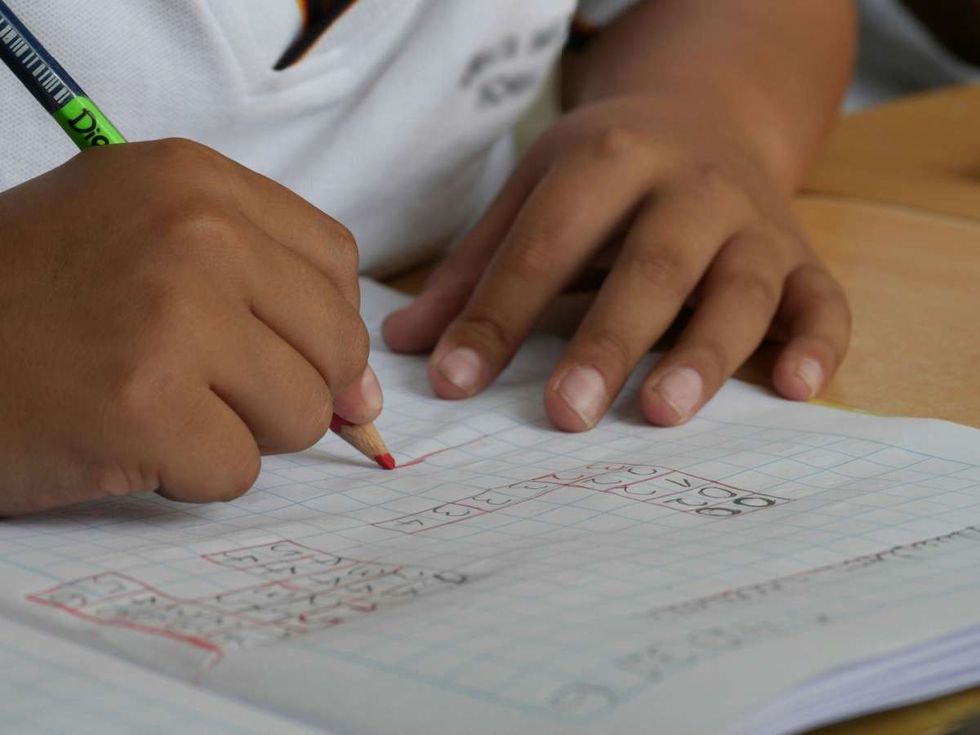True intelligence is more about perspective, observation, and intuition than test scores. Over the past century, researchers have sought unconventional ways to measure it. IQ tests are now widely used to assess candidates at top institutions, but one test making waves for its simplicity is the "world’s shortest IQ test," the Cognitive Reflection Test (CRT), which has just three questions.

CRT, not to be confused with Critical Race Theory, was originated by Yale University Professor Shane Frederick who published a report about it in the Journal of Economic Perspectives in 2005. The three-item cognitive test was designed to measure a person’s cognitive ability through their psychometric scores. These were the three mind-boggling questions of the test:
1. A bat and a ball cost $1.10 in total. The bat costs $1.00 more than the ball. How much does the ball cost?
2. If it takes 5 machines 5 minutes to make 5 widgets, how long would it take 100 machines to make 100 widgets?
3. In a lake, there is a patch of lily pads. Every day, the patch doubles in size. If it takes 48 days for the patch to cover the entire lake, how long would it take for the patch to cover half of the lake?
The second question is a bit trickier. Since 5 machines take 5 minutes to build 5 widgets, the quizzer might react to the question saying the time taken for 100 machines to build 100 widgets would be 100 minutes. That’d be incorrect. In actuality, if 5 machines take 5 minutes to build 5 widgets, it means that if there are 100 machines, then in every 5 minutes, each set of 5 machines will make 5 widgets, hence, totaling 100 widgets. Therefore, the correct answer is 5 minutes.

The third question is the most complex of all. If the patch doubles in size every day, and if it takes 48 days to cover the entire lake, then let’s assume the lake’s size is 2x. Since the size on the last day was double the size of the previous day, the previous day’s patch size was x. So, it took 48 minus one, that is 47 days to cover x, that is half the lake.
Researchers who first conducted this test mainly evaluated participants’ performance based on two factors: Time preference and risk preference, as per the paper. The CRT was carried out on 3,428 respondents in 35 separate studies over 26 months beginning in January 2003. Most respondents were undergraduates at various universities in the Midwest and Northeast who were paid $8 to complete a 45-minute questionnaire.

Frederick mentioned in the report that another researcher Kahneman classified the psychology behind people’s responses into two categories: “System 1” and “System 2.” In the System 1 process, the individual answered spontaneously, without paying much attention. Whereas, in the System 2 process, people utilized their mental operations requiring effort, motivation, concentration, and the execution of learned roles. In most of these questions, the impulsive, that is, System 1 answers proved to be incorrect. For instance, the candidates who answered 10 cents for the first question, 100 minutes for the second question, or 24 days for the third question.
Adding to the explanation behind people’s responses to the three-item CRT, Frederick noted in the paper that people with high cognitive abilities usually live longer, earn more, have larger working memories, have faster reaction times, and are more susceptible to visual illusions. But till now, not many attempts have been made to determine this ability in people, except for CRT. “Despite the diversity of phenomena related to IQ, few have attempted to understand—or even describe—its influences on judgment and decision making,” wrote Frederick.
This article originally appeared last year.


















 Music isn't just good for social bonding.Photo credit: Canva
Music isn't just good for social bonding.Photo credit: Canva Our genes may influence our love of music more than we realize.Photo credit: Canva
Our genes may influence our love of music more than we realize.Photo credit: Canva
 Great White Sharks GIF by Shark Week
Great White Sharks GIF by Shark Week

 Blue Ghost Mission 1 - Sunset Panorama GlowPhoto credit:
Blue Ghost Mission 1 - Sunset Panorama GlowPhoto credit: 
 medical school brain GIF
medical school brain GIF woman leaning on man's shoulder
Photo by
woman leaning on man's shoulder
Photo by 
 Ripe bananas
Ripe bananas How we treat produce could be changing for the better.
How we treat produce could be changing for the better.
 The hole in the ozone layer in 2015.Photo credit: Wikimedia Commons
The hole in the ozone layer in 2015.Photo credit: Wikimedia Commons In the 1980s, CFCs found in products like aerosol spray cans were found to cause harm to our ozone layer.Photo credit: Canva
In the 1980s, CFCs found in products like aerosol spray cans were found to cause harm to our ozone layer.Photo credit: Canva Group photo taken at the 30th Anniversary of the Montreal Protocol. From left to right: Paul Newman (NASA), Susan Solomon (MIT), Michael Kurylo (NASA), Richard Stolarski (John Hopkins University), Sophie Godin (CNRS/LATMOS), Guy Brasseur (MPI-M and NCAR), and Irina Petropavlovskikh (NOAA)Photo credit: Wikimedia Commons
Group photo taken at the 30th Anniversary of the Montreal Protocol. From left to right: Paul Newman (NASA), Susan Solomon (MIT), Michael Kurylo (NASA), Richard Stolarski (John Hopkins University), Sophie Godin (CNRS/LATMOS), Guy Brasseur (MPI-M and NCAR), and Irina Petropavlovskikh (NOAA)Photo credit: Wikimedia Commons